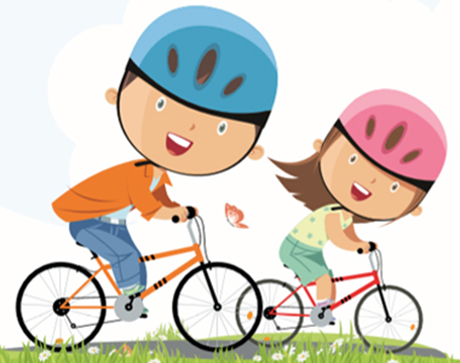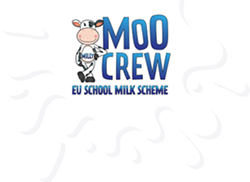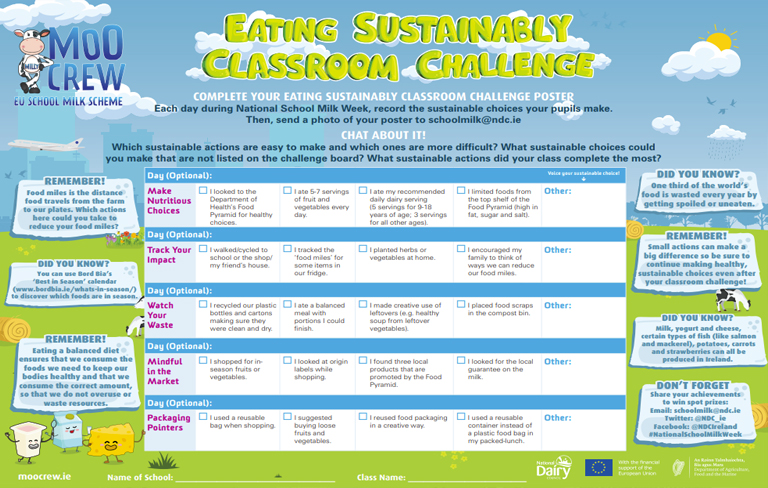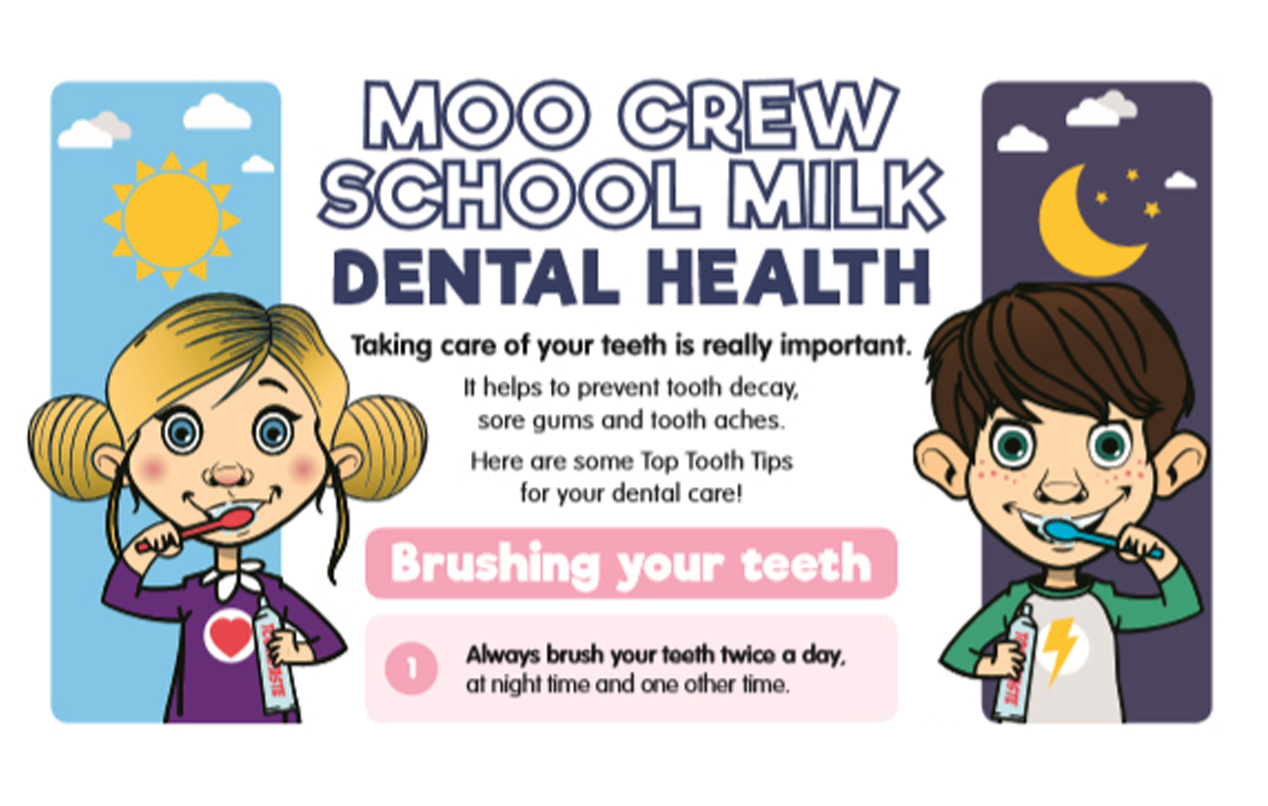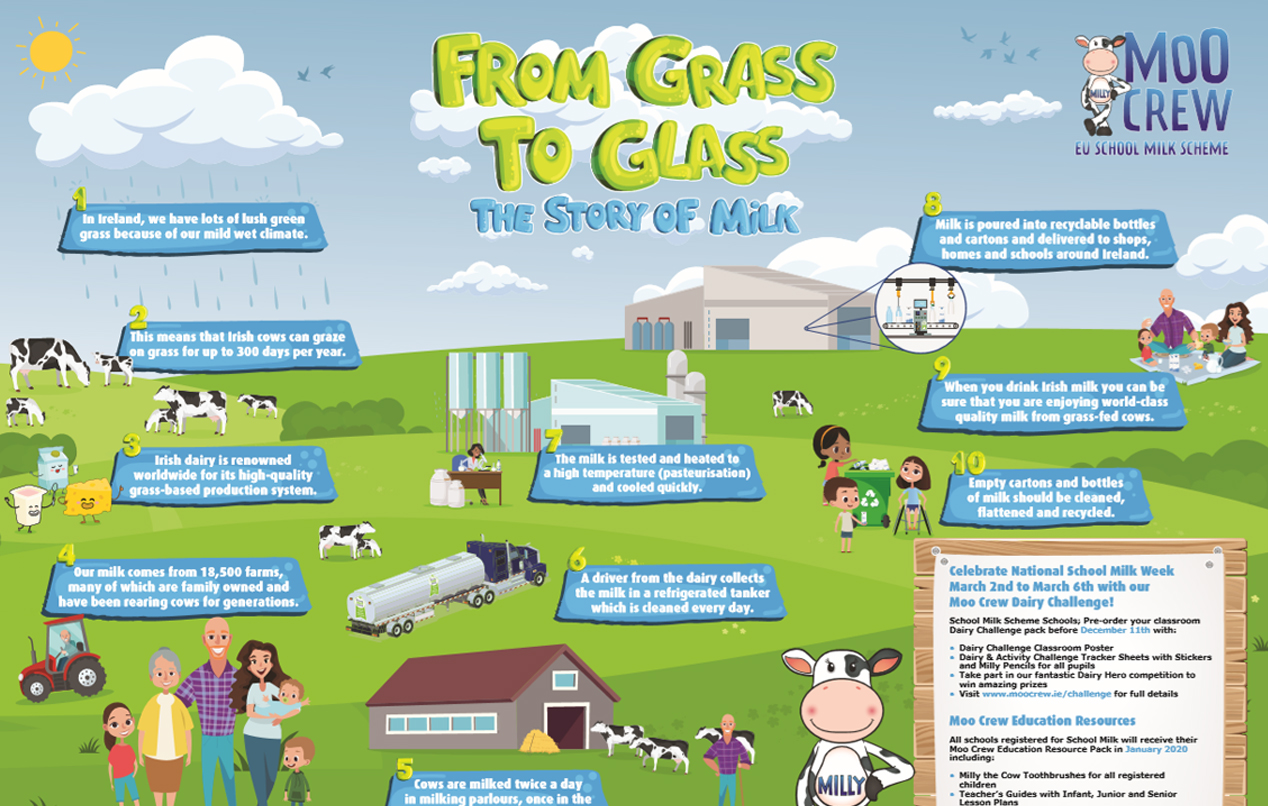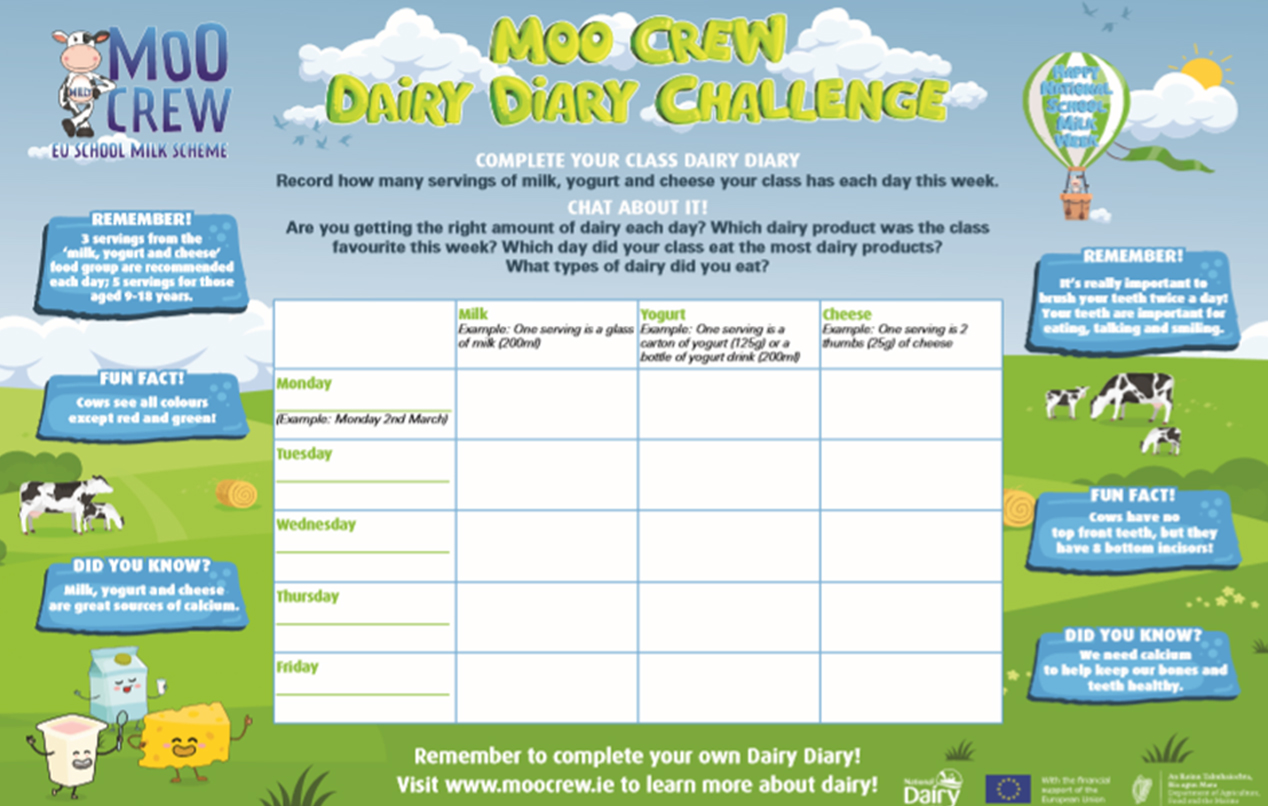OBJECTIVE
To develop pupils’ understanding of dairy products as one of the main food groups and as part healthy, balanced diet.
Duration: 30 minutes (approximately)
CURRICULAR LINKS
SPHE:
Myself Taking care of my body Food and nutrition
WORDS OF THE DAY
Dairy
Milk and food made from milk, such as cheese and yogurt.

Food Pyramid
A pyramid which helps us to know which types of food belong together. The Food Pyramid has shelves with the same types of food placed together on a shelf.
Balanced Diet
Eating the correct amount of food and different types of food.
CLASSROOM DISCUSSION
Display the Department of Health’s Food Pyramid and indicate the ‘milk, yogurt and cheese’ shelf. Ask pupils to name some foods from this shelf. Then, using the Food Pyramid poster, discuss the following ideas about the shelf and record discussion points on the board.
- Recommended servings – it is recommended to have 3 servings from the ‘milk, yogurt and cheese’ food group each day. An example of one serving includes 200ml of milk, 125g of yogurt or 25g of cheese. Reduced-fat and low-fat varieties are recommended.
- Milk, yogurt and cheese are important as part of a healthy balanced diet – they are all excellent sources of calcium, as well as other important things we need to keep our body working, like vitamins and minerals. We need calcium (a mineral) to keep our bones and teeth healthy.
- Bone health:
- The type of foods we eat and our physical activity levels can affect our bones.
- It is important to look after our bones when we are young as they are growing very quickly.
- Vitamin D is important for looking after our bone health. We can get vitamin D from oily fish such as salmon, egg yolk, vitamin D fortified dairy and sunshine.
- It is also important to do regular physical activities which put the weight of our body on our feet and legs. Activities like dancing, running, gymnastics and tennis are good activities for our bone health.
Healthy Eating
GROUP ACTIVITY
Ask pupils to chat in groups about their favourite foods from the ‘milk, yogurt and cheese’ group. Then ask them, as a group, to draw how they include dairy in their diet throughout the day.
For example:
- Starting the day with a bowl of warm porridge made with milk.
- Drinking a carton or bottle of School Milk each day.
- Including cheese cubes with chopped apple for small break.
- Including natural yogurt served with chopped berries for school lunch.
- Having milk in soups or sauces at dinner time.
- Making a snack of melted cheese on wholegrain toast.
- Including milk in scrambled egg or omelettes for dinner.
- Having a cup of warm milk before bed.
Personal Activity
Ask pupils to think of new ways they can incorporate the ‘milk, yogurt and cheese’ food group into their diets, drawing/writing their ideas on the activity sheet.
EXTENSION ACTIVITIES
- Ask pupils to design a poster with their 5 Top Tips for enjoying dairy. Display around the classroom.
- Carry out a survey as a class to find out favourite foods from the ‘milk, yogurt and cheese’ food group, for example, which is the most popular food? How many pupils like milk / cheese / yogurt?
- Using newspapers and magazines, cut out examples of different types of food that make up the dairy shelf of the Food Pyramid to create a dairy shelf poster.

BRING IT HOME
Encourage your pupils to take home the message of the importance of dairy as part of a balanced diet. As a homework activity, you can ask your pupils to:
- Draw / list the milk, yogurt and cheese products in their fridge.
- Ask an adult to help make a healthy snack for lunch, using food from the dairy shelf of the Food Pyramid.
OBJECTIVE
To develop pupils’ awareness of the importance of physical activity to their health.
Duration: 30 minutes (approximately)
CURRICULAR LINKS
SPHE:
Myself Taking care of my body Food and nutrition / Knowing about my body
WORDS OF THE DAY
Dairy
Milk and food made from milk, such as cheese and yogurt.

Calcium
Calcium helps to keep our muscles, bones and teeth healthy. Milk, yogurt
and cheese are sources of calcium.

Muscles
Muscles cover our bones and help us to move.

Bones
Our bones make up our skeleton.
Class Discussion
Begin by asking pupils to recall how dairy contributes to maintaining a healthy diet from Lesson 1 (Dairy in my Diet).
Inform pupils that:
- Physical activity is also important to maintain a healthy lifestyle.
- An active lifestyle* is important for healthy bones and muscles.
- Particular exercises (‘weight-bearing’ exercises) are important for helping to keep bones healthy.
*Inform pupils that it is recommended that children and young people (aged 2–18 years) should be active for at least 1 hour every day.
The National Guidelines On Physical Activity For Ireland Download
Now ask pupils to think about ways in which we can help to look after our bones. Discuss the following points:
- Our bones grow and get stronger during childhood, so it is important to look after them. We can help build strong and healthy bones by eating the right foods and by being active.
- Calcium is important for the growth of our bones. However, over one third of Irish children are not getting enough calcium in their diets.
- Milk, yogurt and cheese are good sources of calcium. Three servings a day are recommended from the ‘milk, yogurt and cheese’ food group for children aged 5–8 years.
- A serving includes a 200ml glass of milk, a 125g pot of yogurt, or a 25g piece of cheese, e.g. Cheddar cheese. If possible, show the pupils an example of each measurement of food.
- Vitamin D is also very important for bone health (see ‘Dairy in My Diet’ for more information about Vitamin D).
Group Activity
Explain that exercises which put all your weight on your feet and legs, like jumping and running, are good for your bones. Ask your pupils in groups to think of, and draw, examples of these types of exercises. Ask each group to share their ideas with the class.
Class Activity
As a class, ask pupils to think of ways in which they can enjoy being active every day and create a class poster.
We can…
- Walk / cycle to school (or part of the way).
- Play games outside with our friends.
- Create new outdoor games with our friends.
- Take part in after-school activities.
- Agree a time limit for ‘screen time’ (TV, computer, phone, tablet etc.) with Mum / Dad / adult at home.
- Check our school is signed up for the Active School Flag – www.activeschoolflag.ie.
Remind your pupils that most of their time in school is spent sitting at a desk, so it’s important to get up and stretch their muscles when they can!
Encourage pupils to make the connection between food and energy needs. Explain that they need to eat to help them to be active during the day.
EXTENSION ACTIVITIES
- In the hall or playground, set up a circuit of simple and fun weight-bearing exercises (running on the spot, jumping jacks, skipping etc.) and ask pupils to do each exercise for 30 seconds. Explain to your pupils how these simple and fun exercises can be done quickly and easily anywhere by almost everyone.
- Ask pupils to draw a picture of themselves doing their favourite weight-bearing exercise.

Bring it Home
Encourage your pupils to take home the message of the importance of physical activity as part of a healthy lifestyle. As a homework activity, you can ask your pupils to:
- Organise a family walk.
- Walk their own dog or a neighbour’s dog (with an adult).
- Play a team sport with their family.
OBJECTIVE
To develop pupils’ understanding of dental care and the importance of a healthy balanced diet for good dental health.
Duration: 30 minutes (approximately)
CURRICULAR LINKS
SPHE:
Myself Taking care of my body Knowing about my body / Food and nutrition
WORDS OF THE DAY

Teeth
Hard and bony structures in the jaw which help us to eat and talk.

Gums
Gums protect the bone and roots of your teeth.

Enamel
Enamel is the hard outer layer of the tooth which covers and protects your teeth.

Tooth Decay
When we eat or drink something that contains sugar, the enamel on our teeth begins to break down. This causes tooth decay.
Class Discussion
Inform pupils that you will be learning about taking care of teeth and gums.
Ask pupils to:
- Point to their teeth and gums.
- Explain what they understand by the words ‘teeth’ and ‘gums’ (refer to Words of the Day section).
- Discuss why they think taking care of teeth is important, for example:
- Not looking after our teeth can give us toothache, tooth decay and sore gums.
- Looking after your teeth when you are young is a great start to having good strong teeth when you are older.
- Teeth are important for eating, talking and smiling.
Explain tooth decay (see words of the day for definition). Luckily, the mouth has its own in-built defence against tooth decay.
About 20 minutes after eating or drinking something sugary, if no more sugar is taken, the acid begins to neutralise and the tooth surface is restored to normal. This is why it is important not to eat sugary drinks or snacks between meals.
Ask pupils to think about ways they can look after their teeth and gums. Draw a spider diagram on the board of pupils’ ideas.
Prompts for discussion:
- Eat healthy meals and snacks.
- The best drinks for healthy teeth are water and milk.
- Include foods that are sources of calcium, which helps to keep teeth healthy, e.g. products like milk, natural yogurt and cheese (low-fat varieties recommended).
- Try not to eat sugary snacks such as sweets, chocolate, biscuits and sugary drinks. Snacking on foods which have lots of sugar can lead to tooth decay.
- Clean your gums and teeth properly.
- Brush your teeth twice daily.
Pair Discussion
Read aloud the following questions about dental care and ask pupils to discuss each question briefly with a partner, then discuss as a class (answers in brackets below)
- How often do you think you should brush your teeth every day? (Twice a day)
- How should you brush your teeth? (Procedure outlined below)
- How long should you brush your teeth for? (2-3 minutes)
Outline procedure for brushing teeth:
- Get help to brush your teeth.
- Brush two teeth at a time (width of the toothbrush head).
- Count to ten for every two teeth you brush.
- Brush gums and teeth with a toothbrush and pea-sized amount of fluoride toothpaste (at least 1,000 ppm) in a gentle circular motion. (See pictures).
- Brush top and bottom teeth.
- Brush outside of teeth and gums, inside of teeth and gums and biting surface.
- Spit out after brushing – no rinsing.

Personal Activity
Give each pupil a copy of the ‘Top Tooth Tips’ activity sheet. Discuss each of the illustrated 8 tips. Ask pupils to listen as you discuss each tip and to put the correct number (from 1 to 8) in the answer box.
Then ask pupils to illustrate their favourite tip.
Top Tooth Tips
- Always brush your teeth twice a day, at bedtime and one other time during the day.
- Use a toothbrush and toothpaste to brush your teeth. Clean every tooth.
- Brushing your teeth properly should take 2-3 minutes (about the length of a song).
- Spit, don’t rinse.
- Never eat or swallow toothpaste.
- Change your toothbrush when the bristles are worn, about every three months.
- Get help with brushing. You will need help brushing your teeth just like you need help tying your shoes or washing your hair.
- When brushing it is important to clean every tooth.
Extension Activities
- Ask pupils, working in groups, to draw up a list of food which is good for keeping teeth healthy.
- Ask pupils to draw in their copies three ways they will look after their teeth.
- Play a game of Dental Bingo in the classroom: Dental Bingo
Bring it Home
Encourage your pupils to take home the message of the importance of a healthy balanced diet for good dental health. As a homework activity, you can ask your pupils to:
- Draw the food they have at home which is good for teeth.
- For a week, ask pupils to record how often they brush their teeth every day.
- Explore the Dental Health Foundation website for more fun and factual tooth tips! www.dentalhealth.ie/resources/educational
Objective
To develop pupils’ understanding of how food and dairy production impacts climate change, the importance of eating sustainably and to raise awareness of sustainable food choices.
Duration: 30 minutes (approximately)
Curricular Links
SPHE:
Myself and the wider world Developing citizenship Environmental care
Geography:
Natural Environments Weather Environmental awareness and care Caring for my locality
Words of the Day

Greenhouse Gases
Gases in the air (like CO2) that trap energy from the sun.

Climate Change
Humans have been doing a lot of activities that make greenhouse gases (like driving cars, using electricity and more). These gases act like a blanket and heat up the Earth. This means that climates (weather patterns) are changing around the world.

Food Production
How our food is grown, processed and packaged before it arrives in our supermarkets.

Food Miles
The number of miles food travels from the farm to our plates. The more your food has to travel, the more food miles it has.

Grass-based Dairy Production
Ireland’s climate is mild (not too hot and not too cold) and wet. This means we have rich grasslands which our farm animals can eat for a healthy diet.

Sustainable Eating
Choosing foods that are good for both our bodies and the environment (everything living and non-living around you, including the air). To do this we can:
- Buy local (close to our home/county or in Ireland)
- Choose foods that are in season (grown naturally and at their freshest)
- Try to avoid food in plastic packaging where possible
- Grow our own fruits and vegetables!
- Use the Food Pyramid to help us to make healthy food choices.

Class Discussion
- Inform pupils that they will be learning about food and dairy production (how our food/dairy is grown, processed and packaged) and eating sustainably (eating foods that are good for our bodies and the environment). Ask pupils to look at their ‘words of the day’ section and the images next to the definitions. Choose some of the following points to discuss with your class and note their ideas on a mind map on the board.
Prompt Questions:
- What do you think happens to our food before it gets to the supermarket?
- Irish milk production is some of the best in the world. Can you guess why?
- How can we tell if milk is farmed here, in the Republic of Ireland?
- What are some food choices we can make that are good for the environment?
- What do you understand about our food choices and climate change?
- Using the diagram above on page 15, consider how food production might contribute to greenhouse gases. Expand on the ideas already explored as a class using some of the expansion points below:
Prompts for Discussion:
- Food production includes all the activities that can increase greenhouse gases, such as agriculture, transport and waste.
- A lot of natural resources, such as land and water, are used to process and package our food.
- Irish dairy farms release some of the lowest amounts of greenhouse gases in the EU.
- Grass-based dairy production is more sustainable for the environment than other dairy production methods. Due to our mild, wet climate, our cows graze outdoors on lush green grass for an average of 240 days a year!
- Approximately 99% of water used in Irish dairy farms is supplied naturally by rainfall, which leads to almost zero impact on water stress.
- Grasslands soak up carbon from the atmosphere, helping to partly offset some of the carbon emissions produced by agriculture farming.
- Using locally grown or locally sourced seasonal food uses fewer food miles.
- Using food with little or no packaging (or biodegradable packaging) helps to reduce waste.
- The Farmed in the Republic of Ireland guarantee tells us that the milk is sourced and processed in the Republic of Ireland and supports local jobs on dairy farms.
Pair Discussion
- Display and read aloud a list of the following foods on the board (include images if you can): milk, yogurt, cheese, fish, potatoes, strawberries, avocados, pineapples, and carrots. Begin by telling pupils that we can find most of these foods in our supermarkets all year long.
- Choose some of the questions below to read aloud and ask pupils to discuss briefly with a partner. Then discuss as a class, drawing from the expansion points that follow:
Prompt Questions:
- Which foods here do you think can be grown or made in Ireland?
- Do you know of any Irish brands (e.g. milk, yogurt, cheese)?
- Which foods do you think are grown in spring? In summer?
- Can you guess where we get avocados from? How about pineapples?
- How do you think the avocados and pineapples get to Ireland? (e.g. by plane, by ship etc.)
- When you see these foods in the supermarket, are they wrapped in plastic?
- Do you and your family usually eat all of the food you buy? How might we waste less food?
Prompts for Discussion:
(choose one or two points below to discuss with your class)
- Milk, yogurt and cheese, certain types of fish (like salmon and mackerel), potatoes, carrots and strawberries can all be produced in Ireland but many of these items come from other countries too. This is especially true for when we buy foods that may not be in season or that are not frozen.
- We have lots of Irish milk and dairy products in our supermarkets. Remember that you can look for the Farmed in the Republic of Ireland guarantee on milk. Keep an eye out for Irish brands of cheese and yogurts when you shop. If possible, buy fish fresh and from your local fish monger. Always read the labels on the foods you choose.
- We can use Bord Bia’s ‘Best in Season’ calendar (https://www.bordbia.ie/whats-in-season/best-in-season/calendar/september) to discover which foods are in season. Apples for example, start coming in season in September and strawberries start in May.
- We may enjoy foods that are not grown in Ireland at all, like pineapples, avocados and oranges. Or we may eat strawberries (which can be grown in Ireland) out of season. Some of these items may be imported from South Africa, Costa Rica, Spain and more!
- Items may be transported to Ireland by plane, ship, and trucks. Imported foods can still be healthy foods that we may want as part of our diet; what’s important is that we try to choose local and in season when we can. By eating locally grown/produced food, we reduce our food miles and support Irish farmers.
- Many foods in the market are packaged in plastic. We can avoid packaged foods by choosing loose fruits and vegetables and using reusable bags. This helps to reduce food waste.
- One third of the world’s food is wasted every year by getting spoiled or uneaten. Considering the resources used to produce food, food waste is a major contributor to climate change.
- Eating a balanced diet ensures that we consume the foods we need to grow healthy and strong; and that we consume the correct amount, so we do not overuse or waste resources. See Lesson Plan 1: Dairy in My Diet.
Pair Activity
Read aloud the Mindful in the Market activity sheet. Complete question 1 as an example with the class. Then, ask pupils to work in pairs and complete the activity sheet. Discuss the choices they made on their worksheet as a class.
Personal Activity
Design a poster for your local milk brand or your School Milk Scheme. Include the name of the brand and the Farmed in the Republic of Ireland guarantee. Remember to use pictures to get people interested! Display your poster in the classroom.
Extension Activities
- Invite a farmer to speak to the class about why we should buy local.
- Grow your own plants in the classroom! Plant some herbs or vegetables with your pupils.
- Encourage pupils to try and reduce their waste by making the most of what they have in their fridge. Milk and yogurt can be combined with some fast-ripening berries/banana to make a delicious fruit smoothie. Wilted broccoli or soft tomatoes that you might normally throw in the bin, can be used in a tasty vegetable soup.

Bring it Home
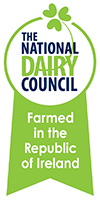 On your next visit to the market, try to find 3 food items that are grown or made in Ireland. Remember to look out for the Farmed in the Republic of Ireland guarantee on milk!
On your next visit to the market, try to find 3 food items that are grown or made in Ireland. Remember to look out for the Farmed in the Republic of Ireland guarantee on milk!- Share your Mindful in the Market activity sheet with your family and test it with some of the foods in your home. How far did these foods travel? Make a family contract to shop local for more food items in your home.
Objective
To develop pupils’ awareness of the importance of dairy farming and their understanding of everyday life on a farm.
Duration: 30 minutes (approximately)
Curricular Links
Geography:
Human environments Living in the local community People at work
Words of the Day

Dairy Farm
A type of farm where dairy products are produced.

Grazing
Animals, like cows, feeding on growing grass.

Milking Parlour
A building on a dairy farm which is used for milking cows.
Class Discussion
Pass the Beanbag – Ask pupils to share their prior knowledge / experience of dairy farming by passing a beanbag around the class. Pupils who have the beanbag share with the class.
Prompt Questions:
- What is dairy? (It is food like milk, yogurt and cheese).
- What is dairy farming? (It is the type of farming which gives us dairy products like milk, yogurt and cheese).
- What animals do you think you would see on a dairy farm? (Cows).
- Have you been to a dairy farm? Describe what you might see on a dairy farm. (e.g. cows, a milking parlour, milking machines, hay).
Pair Discussion
Ask pupils to think about how farmers might take care of the cows on their farm. Ask pupils to discuss their ideas with a partner and then to share with the class.
Prompts for discussion:
- Farmers have bedding for cows to sleep on.
- Farmers can leave cows grazing on fresh grass outdoors for an average of 240 days
a year! - Farmers move cows from field to field so that they have enough grass to eat.
- Farmers bring cows indoors during the cold weather in winter.
- Farmers make sure cows have food to eat.
- Farmers keep the cow sheds and milking parlours clean.
- Farmers make sure that a vet visits the farm to keep the cows healthy
Personal Activity
Begin by asking pupils as a class to think about how milk gets from a farm to a glass on the kitchen table. Then give each pupil a copy of the ‘From Grass to your Glass’ activity sheet. Ask them to look at the images for the 6 stages of milk production ‘From Grass to your Glass’ and to sequence them in the correct order from 1 to 6. Then discuss as a class, talking through each of the stages in the milk production process. *(Correct sequence outlined on page 23).
Extension Activities
- Ask pupils to design the cover of a milk carton.
- Ask pupils in groups to create their own class / school ‘From Grass to your Glass’ wall frieze.
From Grass to your Glass – The 6 stages of milk production
Stage 1 – Cows are fed on fresh grass.
Stage 2 – Cows are milked twice a day in the milking parlour. The milk is kept cool in a milk tank. It is collected from the farm by tankers every 2-3 days.
Stage 3 – At the dairy, the driver pumps the milk out of his tanker into big cool tanks.
Stage 4 – At the dairy, the milk is tested to make sure it is good and that it has no germs in it.
Stage 5 – The milk is then filled into containers. Lorries deliver milk to homes and schools.
Stage 6 – So the next time you enjoy a delicious glass of milk remember you’re drinking a natural and healthy drink.
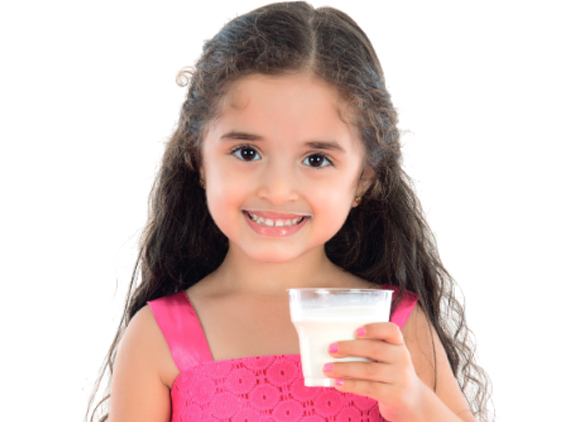
Bring it Home
Encourage your pupils to take home the message of the importance of dairy farming.
As a homework activity, you can ask your pupils to:
- Look at dairy products in the fridge and identify where they were sourced from. For example, was anything sourced from a local farm?
- Does milk in their fridge carry the NDC ‘Farmed in the Republic of Ireland’ guarantee?
- Do they know a local dairy farmer?
- Ask them to find out how many litres of milk each family member has for a week. Compare.
CLASROOM ACTIVITIES
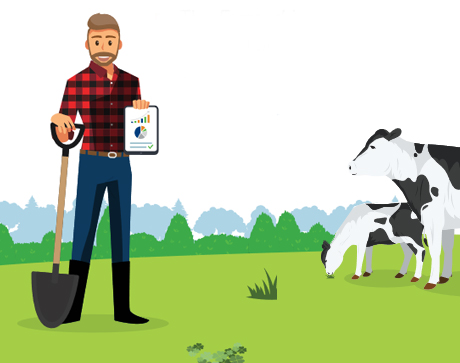
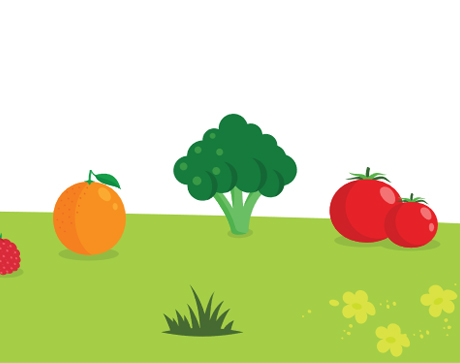
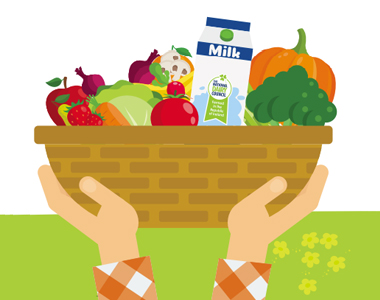
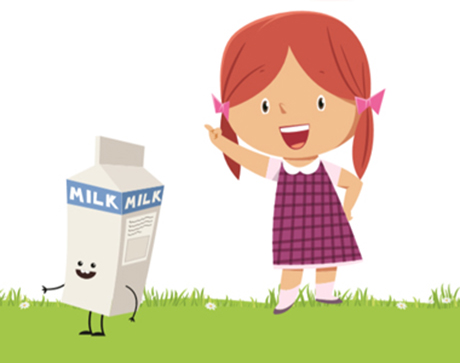

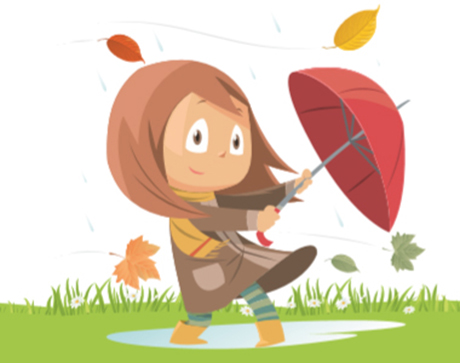
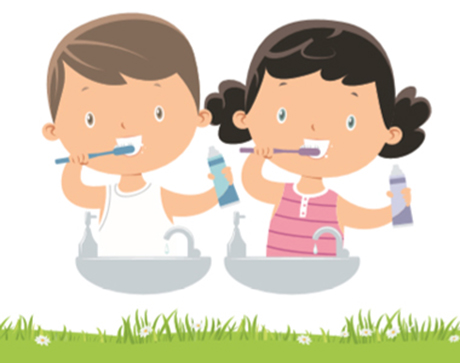
Dental Health
